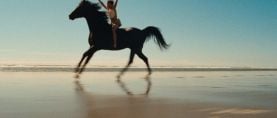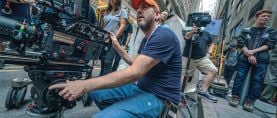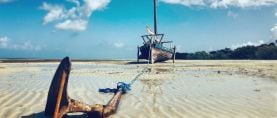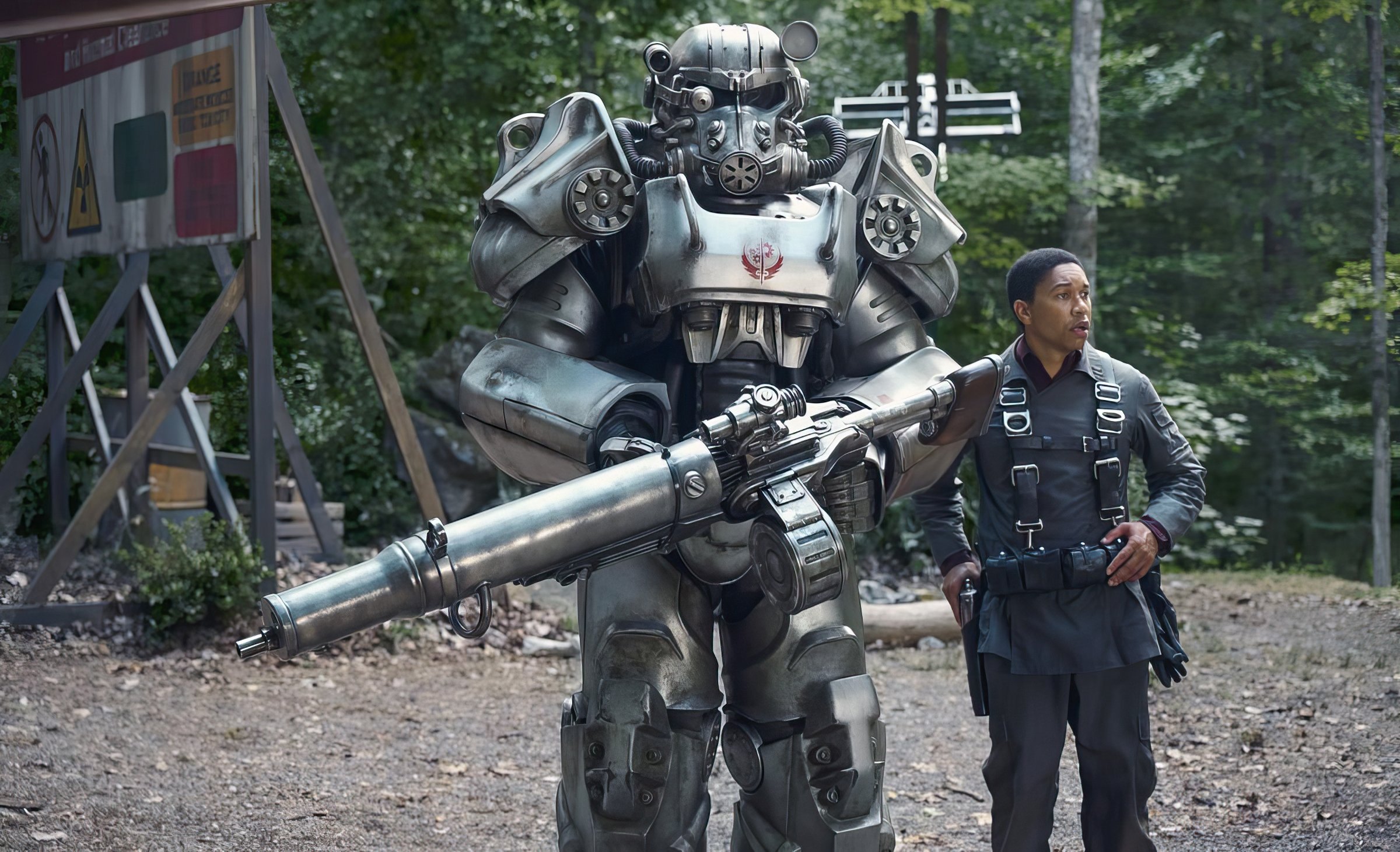
Fallout: Crafting the Aftermath
Production designer Howard Cummings builds an apocalyptic retro future.
Unit stills by Jojo Whilden, SMPSP. All images courtesy of Prime Video.
Production designer Howard Cummings has worked with dystopian landscapes (on the Will Smith adaptation of Richard Matheson’s novel I Am Legend) and futuristic sci-fi that incorporates the iconography of the Old West (HBO’s Westworld) — so he might seem the perfect talent to design the Amazon Prime adaptation of Bethesda’s video game Fallout, which combines all the above. But Cummings initially found himself overwhelmed by the project’s scope. “I didn't really know what I was getting into in the beginning,” he admits.

It didn’t help that Cummings was unfamiliar with the video game. “I'm not a gamer,” he admits. “[Executive producer] Jonathan Nolan is, and then the show runners, Graham Wagner and Geneva Robertson-Dworet, they played the game. And, apparently, I gave it to my son for Christmas, along with an Xbox, and it was Fallout 4, I think.” In fact, Cummings had forgotten the whole thing until his son found out he was working on the streaming adaptation: “He said, ‘You're doing Fallout?’ And I said, ‘Yeah.’ And he said, ‘You gave me that game.’ And I said, ‘I did? Did I play?’ And he answered, ‘Yeah, you sucked.’”
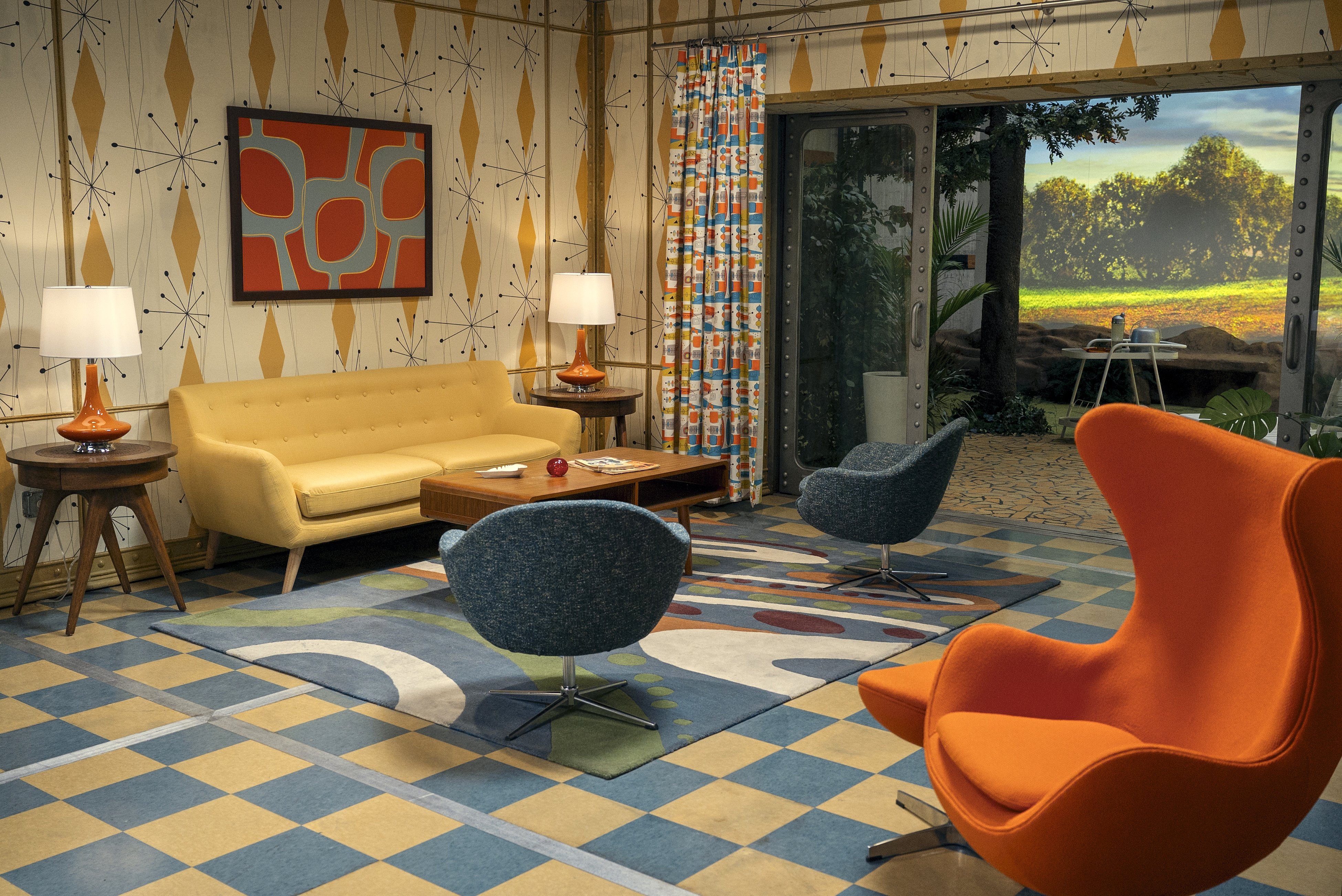
Fortunately, Cummings subsequently did a deep dive into Fallout gameplay while gearing up to adapt its iconography for the series, which ranges from a 1950s-style “contemporary” era prepping up for nuclear war, to a nuclear-scarred “Wasteland” where a society of plucky Vault-dwellers spawns wholesome heroine Lucy MacLean (Ella Purnell), to a “Brotherhood” of soldiers patrol the Wasteland in armored battle suits (including turncoat Maximus, played by Aaron Moten), and where former cowboy actor Cooper Howard (Walton Goggins) has evolved into a hideous, Spaghetti Western-style gunslinger known as The Ghoul.
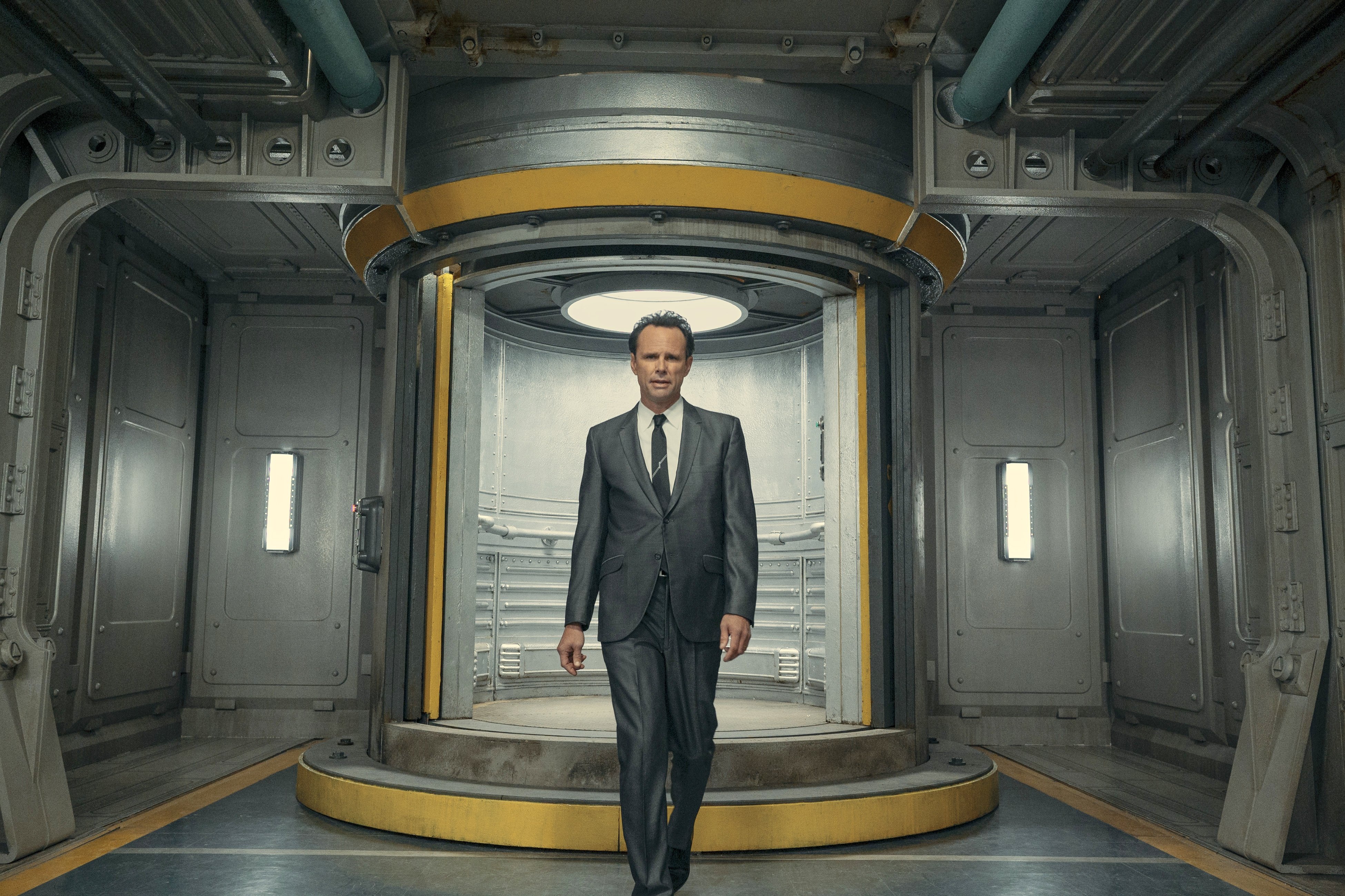
Visually, Fallout’s Atomic Age flashback scenes key on Los Angeles and its landmarks — just before they’re fated to be bombed into the Stone Age. “In the opening sequence, for instance, it's a house in the Hollywood Hills and you see L.A. in the background, but that's not in any of the games, you've never seen the L.A. skyline, so we built it,” Cummings describes. “We got the West Coast by adding that ‘Googie’ architecture. Like at the LAX Airport, there's that crazy restaurant that's an example of Googie architecture. And, in the game, the openings usually have a very suburban house where the Vault-Tec guy goes to sell you a Vault, and we were very inspired by tract home architect Frederick Liebhard. But, for our story, we used this completely slick, Mid-century house that was in Nyack, New York, because we shot the whole thing for crazy reasons in New York City for L.A., which is something you only do in the film business.”
The glassed-in home pays off as the entire front picture window is shattered by the first nuke’s shock wave. “The last place you want to live is in a glass house with an atomic bomb going off,” Cummings notes.
After the nuclear war, Fallout flashes forward to the post-apocalypse and the underground world of the Vaults, where surviving citizens in blue jumpsuits keep a stiff upper lip while living in immense shelters depressingly designed to conjure up all the comforts of Midwestern America circa 1955. Massive circular mechanized doors wall off one Vault from another to keep individual populations quarantined, and one section of Lucy’s home Vault features a stylized cornfield environment for an early marriage scene (and subsequent bloodbath). “We made the Vaults bigger than they are in the game,” Cummings says. “Geneva had written this crazy cornfield scene. We had long discussions about, ‘Oh, how big is this going to feel? Are they actually eating this corn, or is it just part of their training for when they go to the surface and just know they should actually use it for a food source?’ There's no stage big enough to ever do that, so this was a great way to give it that scale.”

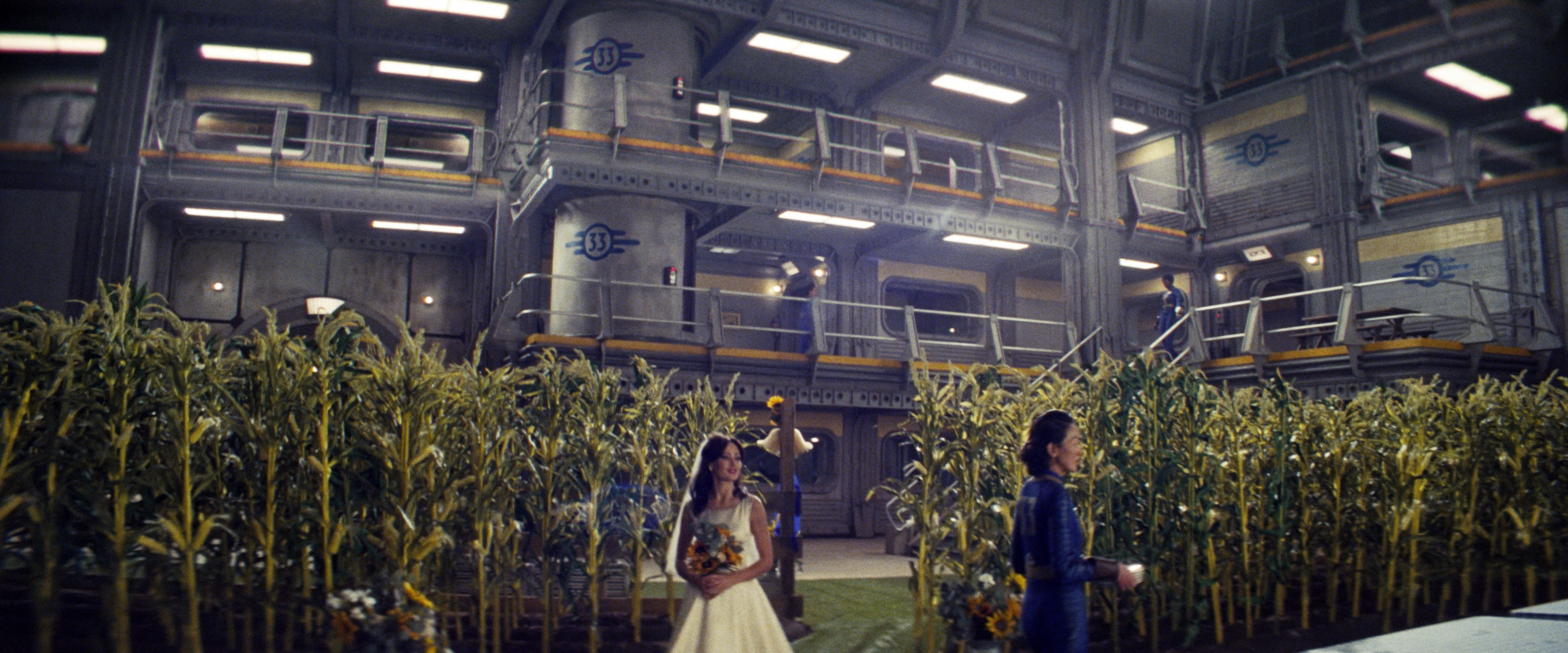
Cummings elected to go for a deliberately artificial look. “In the original script, the Vault walls were painted — the mural, the landscape, was painted... the kind of Oklahoma-perfect farm. And I asked, ‘What if it was projected?’ That way we could change the time of day — I think it'd be great if they could get married, and then the sun is in the center, and then have the party at sunset, and then nighttime for the dancing.”
Volume LED screen tech was used to create the backdrop, and Jonathan Nolan got the idea that during the attack from another Vault, someone would shoot the background projector and the film would burn up. “We were trying to make the asset function in two ways,” Cummings explains. “When you're looking at the Vault side it had to be real; when you're looking at the farm side it had to look artificial. So we essentially created the Volume technology in the game with this crazy projector prop that was based on some Russian thing that I found online. We built the image in three planes: there was some foreground corn and farm buildings, then there is a tree line midsection and then behind that was mountains and sky. So when the thing gets ruined by the machine gun guy, you can see how it was built and how the film works.”
A flashback to Cooper filming his Western TV show echoes the artificiality of the cornfield set, eerily tying present and future together — but Cummings went with an old-fashioned flat backdrop for the TV set. “I loved it, because, having done Westworld, and having gone to Utah to get the actual beauty of Monument Valley, to have the painted fake version of it, I thought was ironic. Because I was running out of money, I just threw the backdrop up behind the barn. We just took the set from the cornfield, and I throw out that thing, took the corn out, threw some dirt down and some tumbleweeds. Originally that was supposed to be in a whole Western town. And I said, ‘No, he should just walk off the set and go outside, see his wife and then go back into another stage.’”
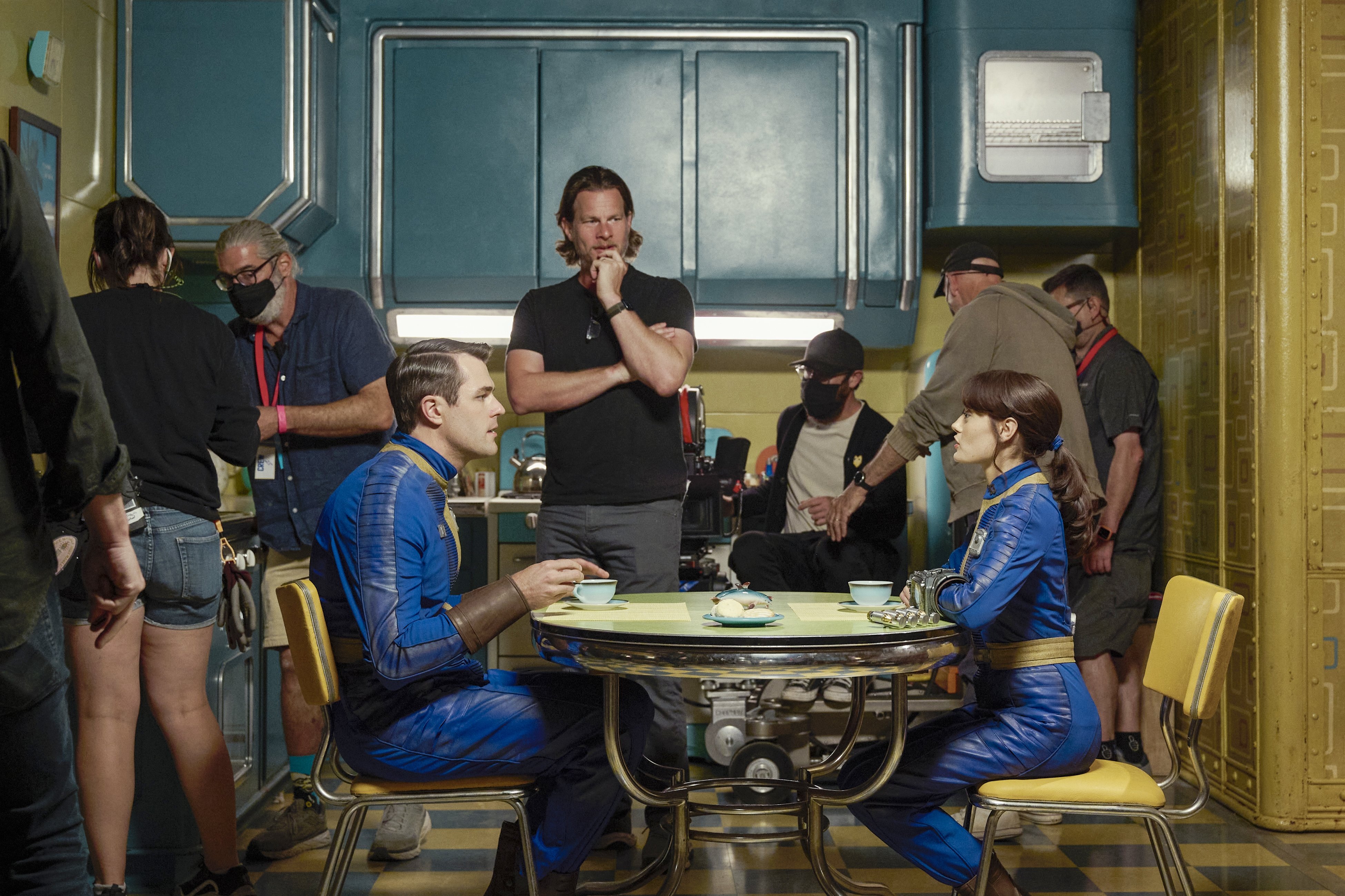
Many projects, from The Mandalorian to Masters of the Air, have used the Volume technology for challenging exterior scenes, which Fallout boasts a lot of. But Jonathan Nolan pushed the production not only to shoot Wasteland sequences in New York, but even in the South African country of Namibia. “When Lucy comes out of the Vault, that's a real place: Kolmanskop in Namibia,” Cummings says. “I'm so grateful because most people would do a scene like that in the Volume. They send a crew there, scan it, I throw a bunch of sand down, some broken pieces of ruins and have all this control and not go to this crazy place with 60 mile-an-hour winds. When it wasn't windy, it was foggy as hell and you couldn't see anything. And it had these hyenas that were blind from the windstorms and would wander in. It was a protected area because parts of it were still functioning diamond mines.”
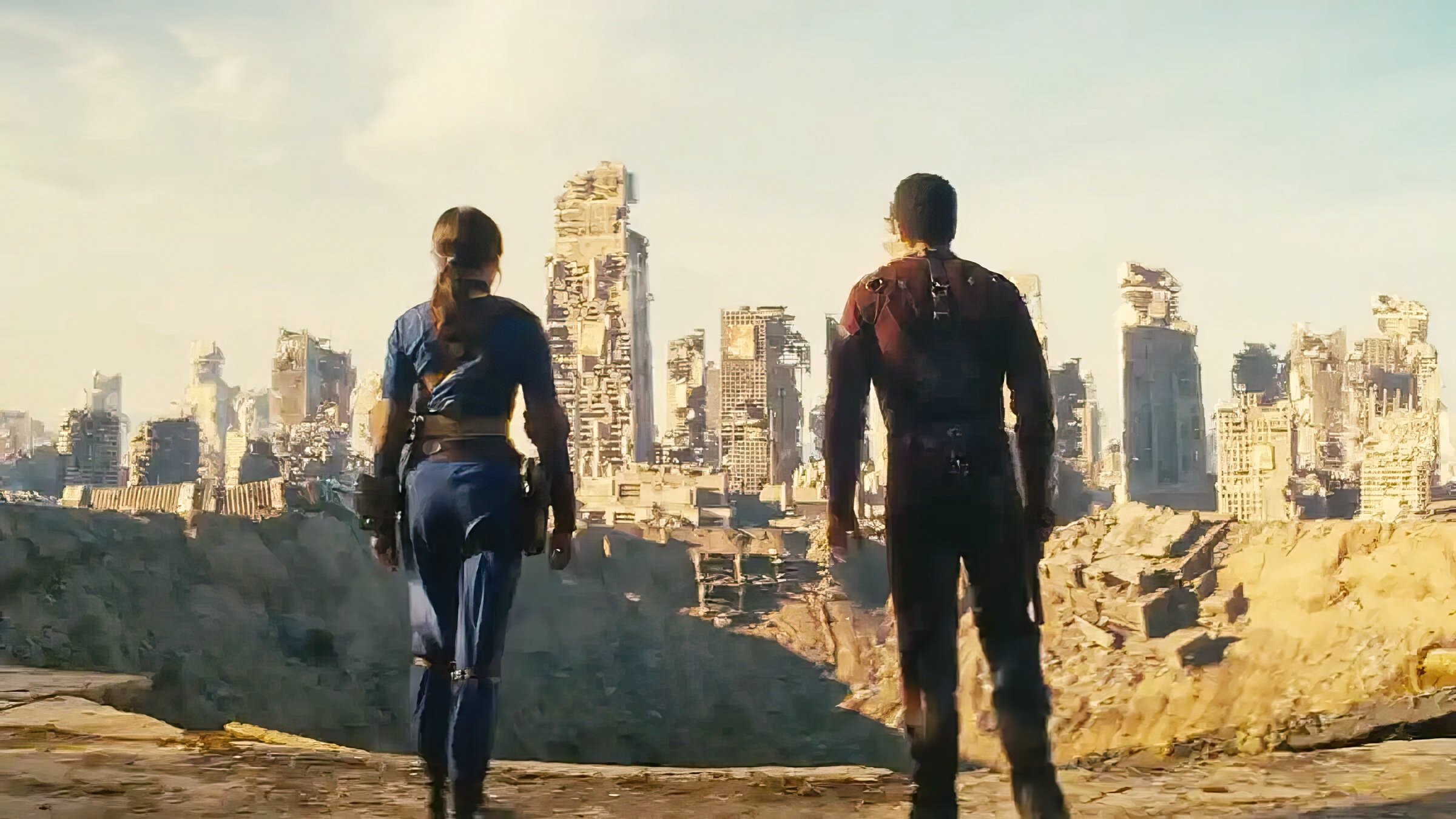
With the Wasteland strewn with wrecked buildings and vehicles from before the war, the production took advantage of a treasure trove of derelict aircraft in Utah. “Somebody in the writers room said, ‘Hey, there's this crazy abandoned airfield from World War II; parts of it are working, parts of it aren’t,’” Cummings recalls. “It's called the Historic Wendover Air Force Base. And we got there and I was just in heaven. Because there are wrecked planes and stuff everywhere.” He wound up using aircraft carcasses along with school buses and other wreckage to build Wasteland communities and dwellings.

One of the most memorable Fallout designs is the T-60 powered-armor suit, a hulking, metallic and mechanized apparatus that allows members of the militaristic Brotherhood of Steel to terrorize Wasteland dwellers and/or mete out justice as the narrative demands. The suits engage in many of the show’s major action sequences and they’re the sort of mechanisms that are now almost always rendered through CG imagery. But Cummings discovered early on that Jonathan Nolan wanted the T-60 suits done practically. “I said, ‘What? Do you know how hard that is?’ I had never really done it. We teamed up with Legacy Effects, and I actually dumped the project on the prop guys, Michael Jortner and Peter Gelfman. If you think about this thing, it's really a vehicle. And they wanted it to look like the game suit, so it wasn't like the suit was going to be designed. And a ‘suit’ implies costumes, props, and I don't always design those things. But, in this case, we did, and they wanted it to do all that movement, and it was part of [Nolan’s] theory of grounding CG, and then having real things to help tie the two together.”
After consulting colleagues on some other projects, Cummings determined it would take around 18 weeks to build the T-60 suits. “I got an illustrator named Tang Lee, who I worked with in Westworld. And he's very good at motion, graphic emotion, animating in 3D, modeling it with animation, and he figures out how things actually can move for real if you're going to do them for real. He was the perfect person for this. And he modeled it all without any assets from Bethesda.”
The armored Brotherhood members are transported by VTOL aircraft called Vertibirds — Fallout’s version of the Bell Boeing V-22 Osprey. Cockpit scenes were filmed using the Volume for the view outside, but a large part of the aircraft fuselage was required for the action. “I had this great construction coordinating welder named Sharpie [Daniel “Sharpie” McNabb], and he learned his trade by building airplanes. We were going to shoot the fuselage on a gimbal, and it had to be kind of lightweight. And he said, ‘Let's just make it like a plane; we're gonna make it out of aluminum.’ And we took the sheeting on the outside, it's always hand-riveted on, and he built the whole thing. The special-effects team had a rotating gimbal and we shot that in the Volume.”

For a Vault-Tec corporation boardroom sequence late in the series, Cummings was called on to pay homage to one of the greatest sets in movie history, the War Room designed by Ken Adam for Stanley Kubrick’s Dr. Strangelove. But Cummings had to do the War Room, with its iconic, circular overhead light fixture, at a fraction of the original’s size and a fraction of its budget. “That came from [producer] Graham Wagner. He said, ‘I want Dr. Strangelove,’ and I said, ‘Oh, God, okay.’ We shoot it in four day, five days. It was a really great idea, but I didn't have enough money to build the room at the time. And I had no more stage space — there's no room for me to build. And I showed them all the reference to how big that thing was.”
Cummings worked with set decorator Regina Graves to solve the problem. “I had somebody drawing it immediately, because it was all based on the size of the room and the size of the lighting fixture, and how many people were sitting at the table, and that crazy map. But that was in a theater on the Lower East Side. I think it was built in the ’70s. It was all cement, it looked like a bunker. You can see some of the supports in there. So we had to do that on location, like in a day prep, and I had to build that thing in three days.”
A gallery of additional images from the production can be found here.
Fallout cinematographer Stuart Dryburgh, ASC, NZCS spoke to interviewer Dave Perkal, ASC for this episode of ASC Clubhouse Conversations:
